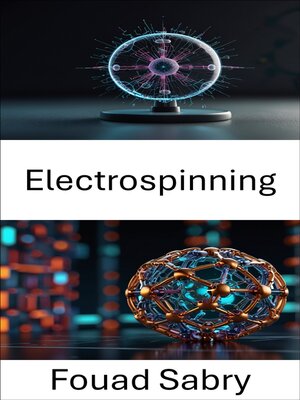Electrospinning
ebook ∣ Advancing Nanofiber Technologies for Drug Delivery and Biomedical Applications · Nanocapsule
By Fouad Sabry

Sign up to save your library
With an OverDrive account, you can save your favorite libraries for at-a-glance information about availability. Find out more about OverDrive accounts.
Find this title in Libby, the library reading app by OverDrive.



Search for a digital library with this title
Title found at these libraries:
| Library Name | Distance |
|---|---|
| Loading... |
Electrospinning is revolutionizing nanotechnology, offering groundbreaking solutions in medicine, engineering, and textiles. This book explores the science behind electrospinning, demonstrating its transformative potential in creating nanocapsules, nanofibers, and advanced materials that redefine industry standards. Whether you are a professional, student, or enthusiast, this book provides valuable insights into the future of nanomaterials.
Chapters Brief Overview:
1: Electrospinning – Introduces the process, mechanisms, and applications in nanotechnology.
2: Melt electrospinning – Explores the solventfree technique for producing highperformance fibers.
3: Nanofabrics – Discusses their role in creating ultralight, durable, and functional materials.
4: Carbon nanofiber – Examines their strength, conductivity, and applications in various industries.
5: Nanofiber – Highlights their structural advantages and role in drug delivery and filtration.
6: Alternating current electrospinning – Details innovations in fiber formation using AC fields.
7: Alginic acid – Covers its integration into nanofibers for biomedical and food applications.
8: Biotextile – Explores ecofriendly textiles engineered with nanotechnology.
9: Hydrogel fiber – Discusses moistureretaining fibers for medical and cosmetic use.
10: Interfacial polymerization – Explains fiber synthesis at molecular interfaces.
11: Spinning (polymers) – Reviews traditional and modern spinning techniques.
12: Nerve guidance conduit – Highlights fiber applications in nerve regeneration.
13: Polymer nanocomposite – Examines how nanofibers enhance polymer strength and flexibility.
14: Nanoscaffold – Explores 3D nanostructures for tissue engineering.
15: Noncarbon nanotube – Introduces alternative nanotube materials.
16: Melt blowing – Discusses fiber production through highspeed airflows.
17: Rockcliffe St. J. Manley – Explores his contributions to fiber research.
18: Sodium polyacrylate – Covers its superabsorbent properties.
19: Spinneret (polymers) – Examines nozzlebased fiber formation.
20: Nanocellulose – Highlights its strength and sustainability.
21: Medical textiles – Discusses nanofiber applications in healthcare.
From innovative medical breakthroughs to sustainable textiles, this book bridges fundamental science with realworld applications. It equips readers with knowledge essential for careers in nanotechnology, materials science, and biomedical engineering. Dive into the future of electrospinning and discover the endless possibilities of nanocapsules.







